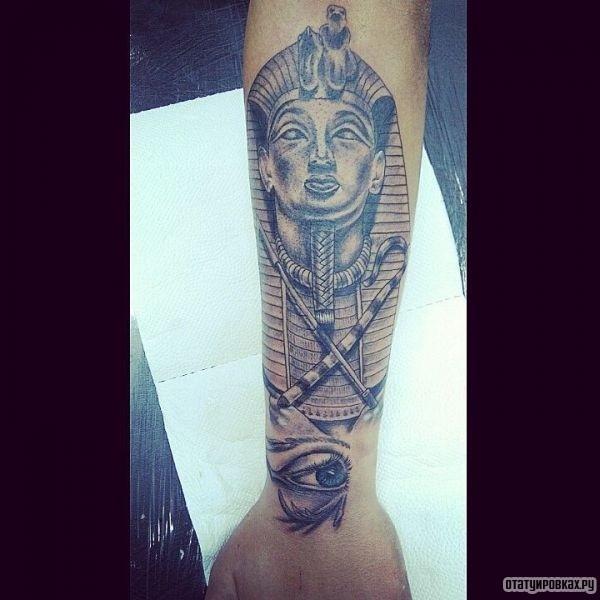
Egyptian tattoo: Pharaoh ink.
- Tattoo in Ancient Egypt.
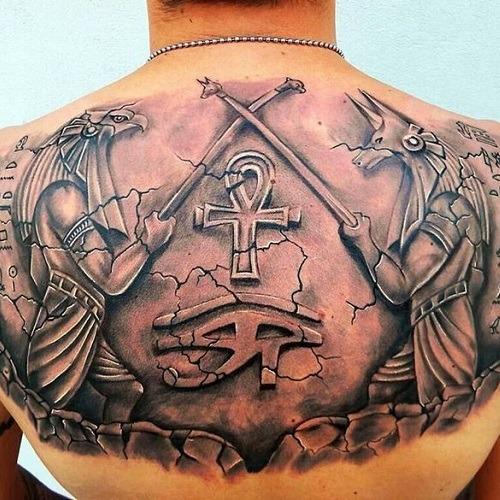
The art of tattooing has been practiced since Neolithic times on the Eurasian continent.
Archaeological excavations date the appearance of tattooing during the Middle Kingdom of Egypt between the 21st and 17th centuries.
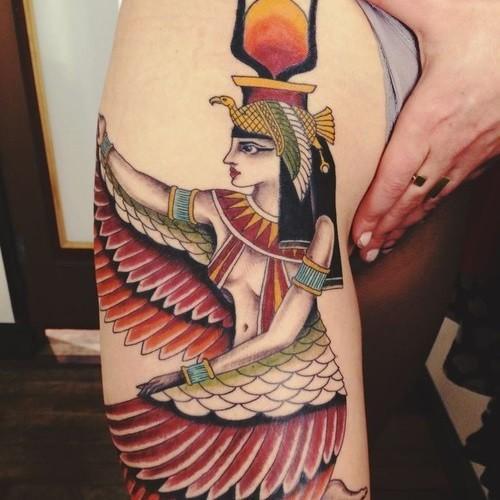
In Egyptian Thebes, archaeologists have found three tattooed female mummies 4000 years old. They had tattoos on their arms, legs, and torso. These tattoos feature parallel lines and aligned dots.

In the kingdom of Nubia (currently south of Egypt), archaeologists have found several tattooed female mummies:
- Amunet, a priestess of the goddess Hathor, lived during the 7th Egyptian Dynasty (-2160 to -1994), and her mummy had several tattoos symbolizing fertility (elliptical shape) below the navel. Parallel lines were also tattooed on her thighs and arms.
- At the same time, archaeologists discovered a mummy, analyzed as a dancer's mummy, with several designs depicting diamonds on the chest and forearms.
- Another female mummy wore similar tattoos.
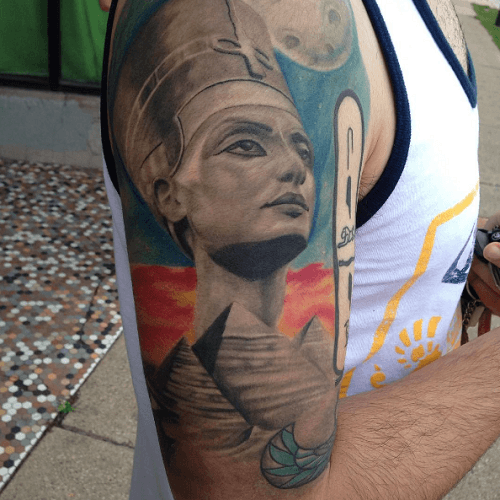
Archaeologists have found several female figurines on which several symbols were drawn, like a tattoo.
These figurines are nicknamed wives of the dead were associated with the goddess Hathor, a goddess who personifies sexual desire.
They were buried with the dead to bring back their primitive sexual instincts so that they would be reborn in the afterlife.
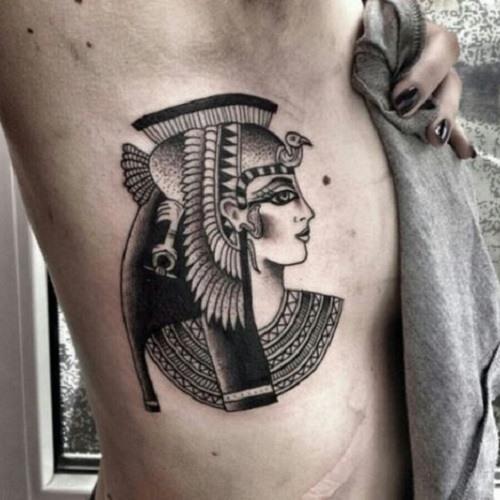
The statuettes, decorated with "tattoos" found during archaeological excavations, depicted exclusively women.
The tattoo was body art dedicated to women, probably with a religious and mystical purpose.
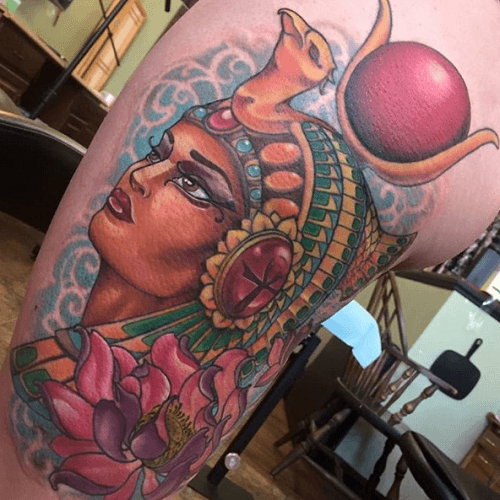
- Egyptian tattoo today.
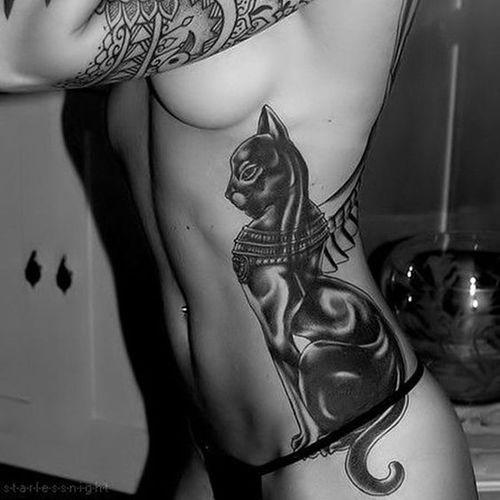
Egyptian motives became more complex. Today, Egyptian tattoos represent symbols associated with Ancient Egypt, ancient monuments, gods or pharaohs.
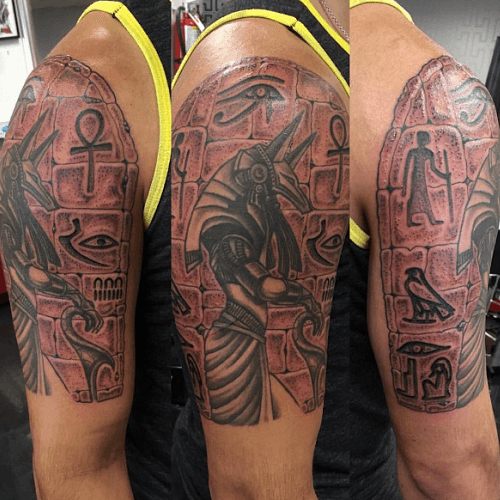
The scarab was a sacred insect in ancient Egypt. In the tattoo universe, a small insect personifies strength and immortality (rebirth).
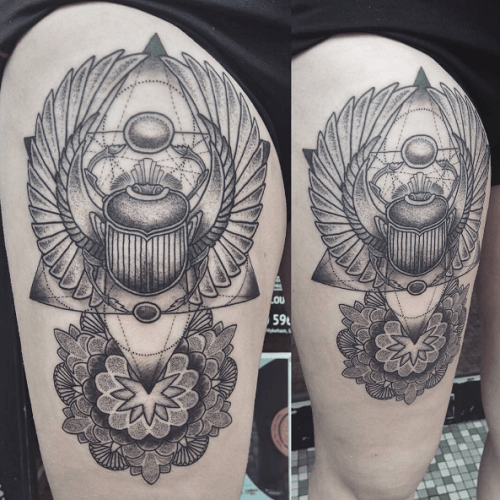
The Sphinx is a hybrid animal, an alliance between Ra, the sun god (lion's body) and the pharaohs (human head). He represents divine and pharaoh power.
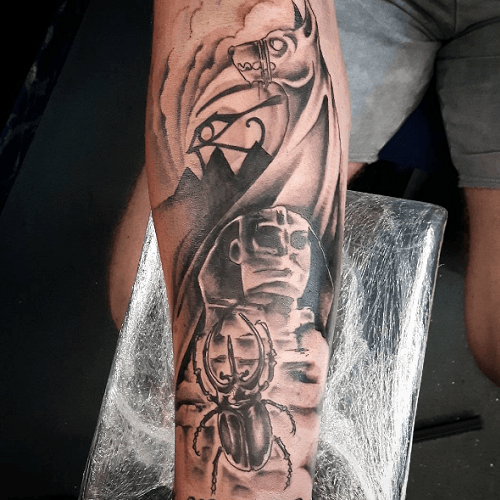
In Greek mythology, the sphinx was a hybrid of a female creature (female bust, cat paws and bird wings).
She was sent by the gods to Thebes. She brought endless terror to Thebes and refused to leave the city if the traveler did not find the answer to the riddle. The losers were devoured. Creon, regent of Thebes after the death of the king, promised the crown of Thebes and the hand of a widow to a traveler who would rid Thebes of the Sphinx.
Oedipus has solved the riddle of the Sphinx. In a rage, she throws herself from the top of the city walls. Oedipus becomes the husband of Jocasta, his mother. The sphinx tattoo in this case symbolizes death and wisdom.

Eye of Horus or EyeHorus a hieroglyph meaning "saved eye" (a hybrid of a human eye and a hawk eye). In Egyptian mythology, Horus loses an eye during a battle with Seth, his uncle, to avenge the death of Osiris, his father.
During the fight, Seth tears off his left eye, which he cuts and throws at the Nile. He takes every part of Horus's eye except one, which he replaces with a "magic part" that allows Horus to restore his vital integrity.
The Eye of Horus has a magical function related to the restoration of integrity and the vision of the invisible. For the Egyptians, it was a protective symbol.
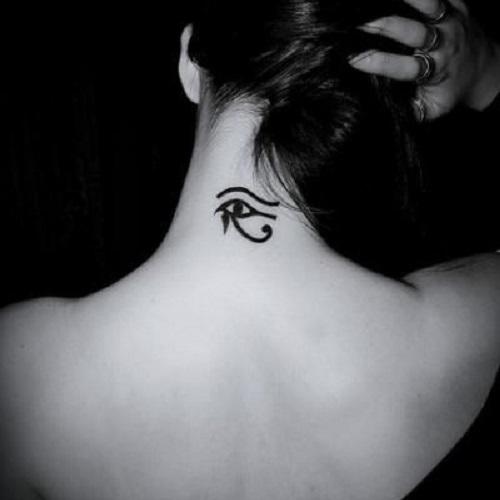
TheAnkh or "key of life" is a hieroglyph meaning "life" and representing a divine attribute. Today it is used as symbol from Ancient Egypt. The "key to life" is generally considered a symbol of eternal life and fertility.
It will represent the union between Isis (female, represented by the curve) and Osiris (male, represented by the correct element).
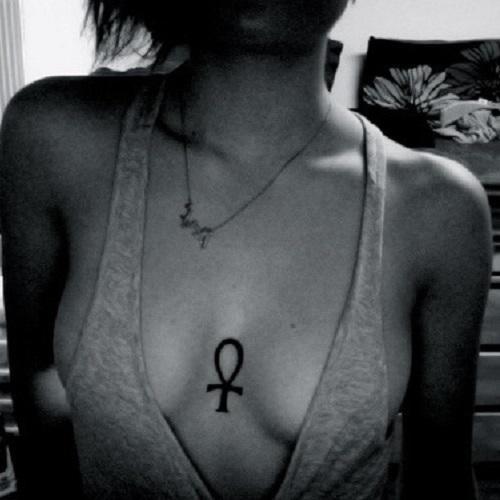
Nefertiti (from -1370 to 1333) was the royal wife of Pharaoh Akhenaten. According to some archaeological research, Nefertiti played an important political and religious role during the Amami period.
Its legendary beauty is widely represented in Egyptian frescoes.
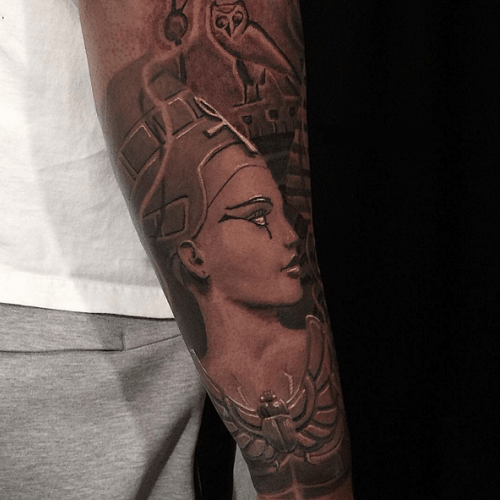
Isis is considered the protector of the pharaohs. More broadly, the Egyptian Isis tattoo symbolizes maternal protection.
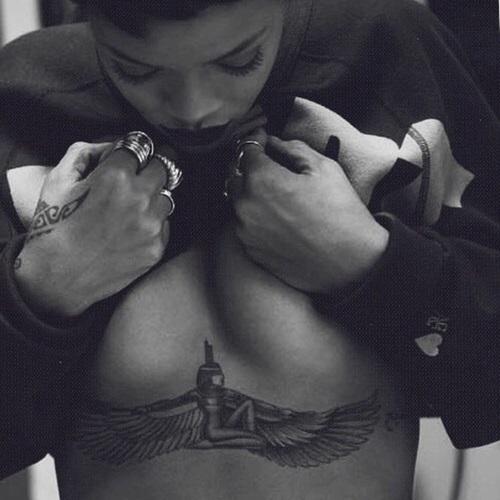
Anubis is considered the funerary god of Ancient Egypt.
He welcomed the dead and then mummified the bodies before they became eternal. He cleansed the hearts and defiled the insides, and then judged souls by the weight of the heart.
The Egyptian tattoo depicting Anubis is undoubtedly associated with the realm of the dead and spirits.
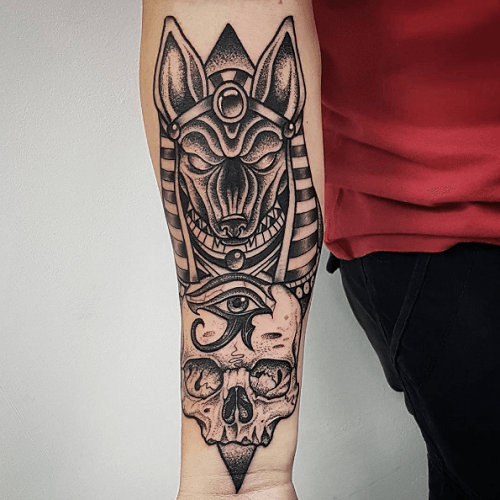
Horus is considered a cosmic deity, the son of Osiris and Isis. The eyes of Horus represent the Sun and the Moon, this night star that reappears in the sky, a symbol of a possible rebirth.
Horus and his eye represent clairvoyance and an ongoing life cycle.
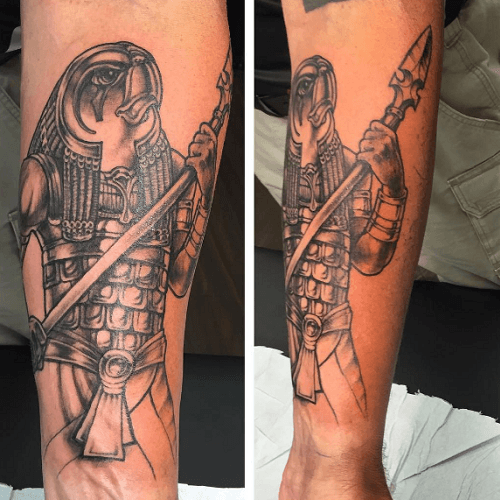
Egyptian pharaoh tattoos symbolize royalty.
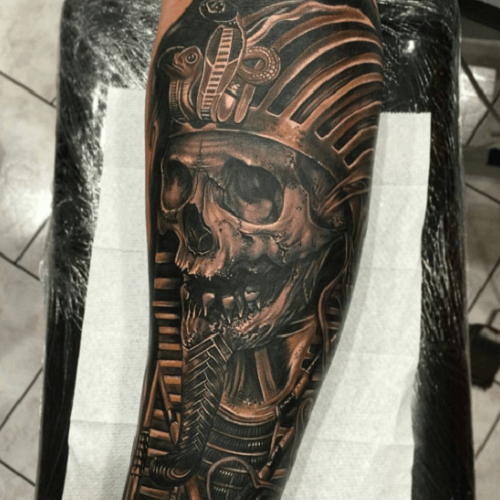
We have selected the most beautiful Egyptian tattoos for you.
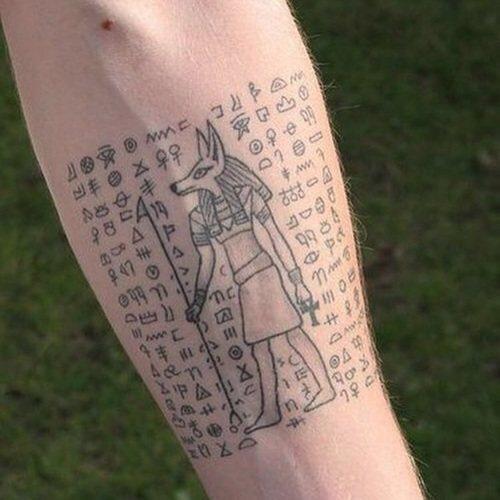
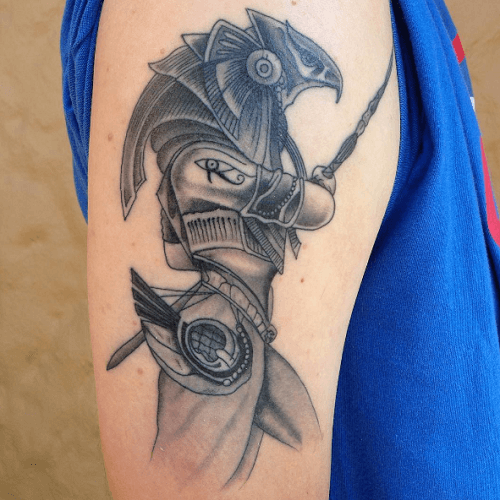
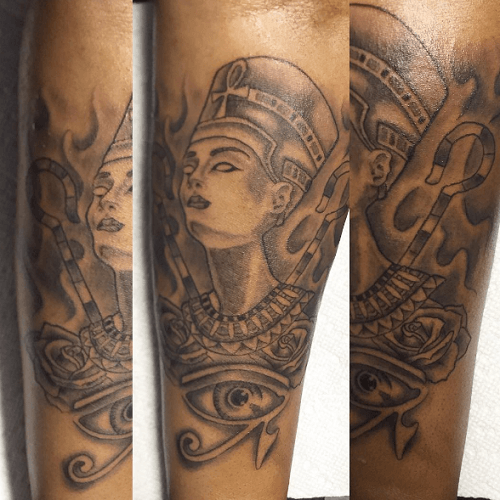
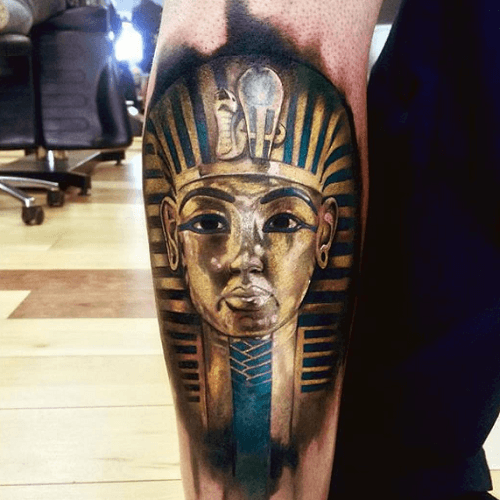
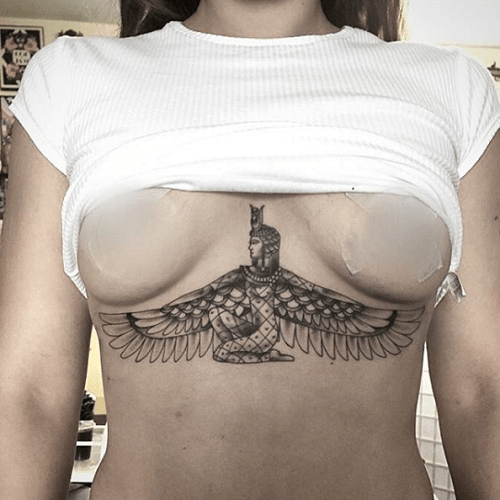
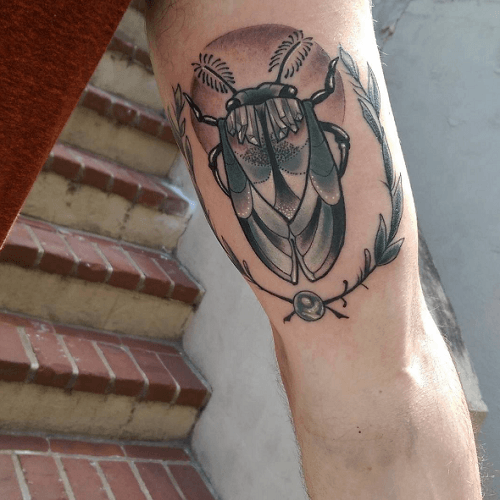
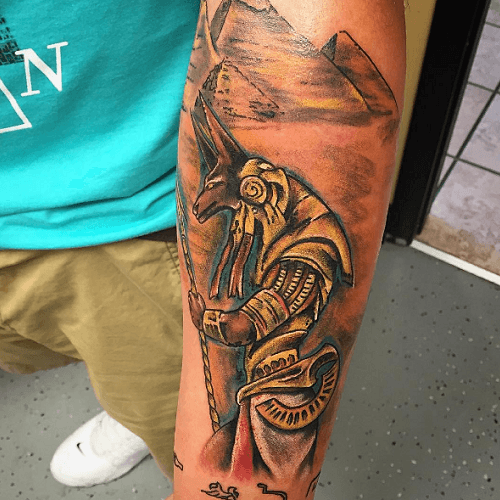
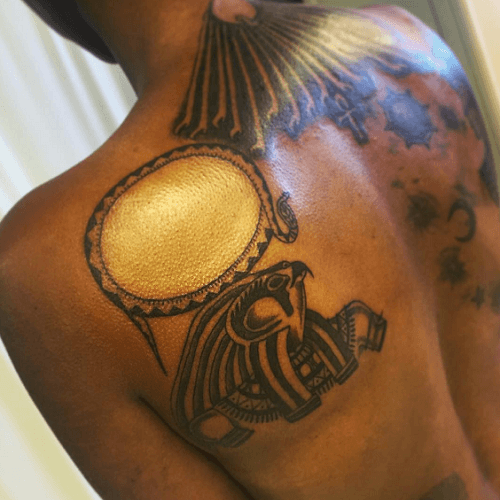
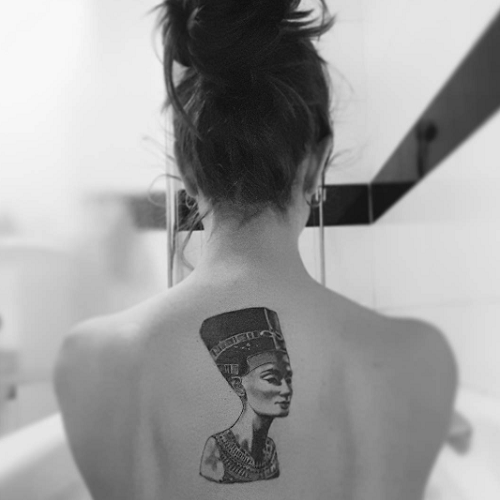
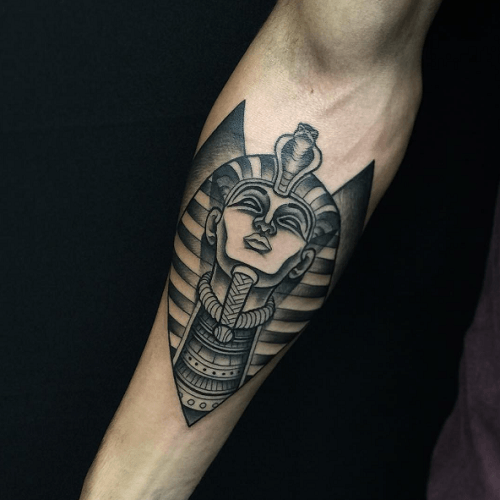
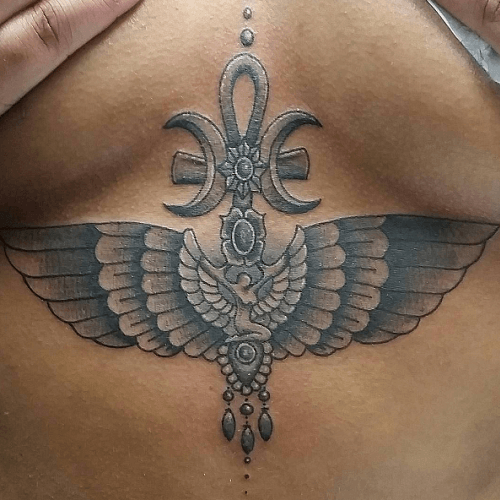
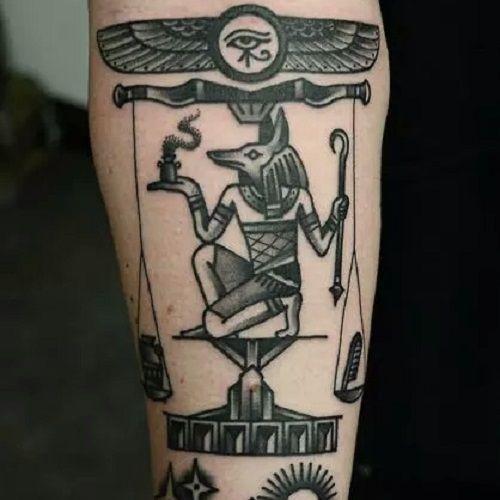
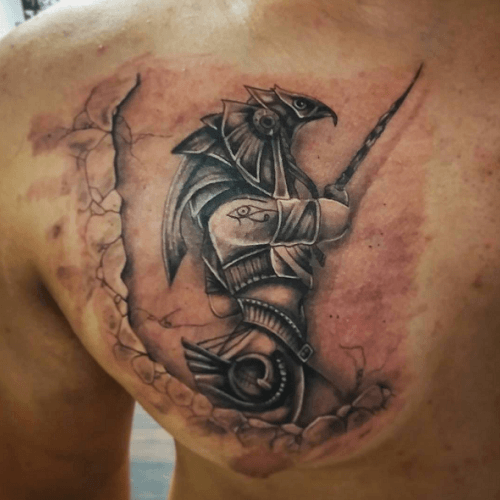
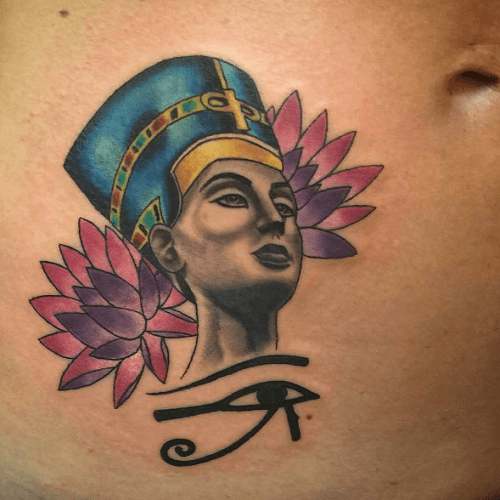
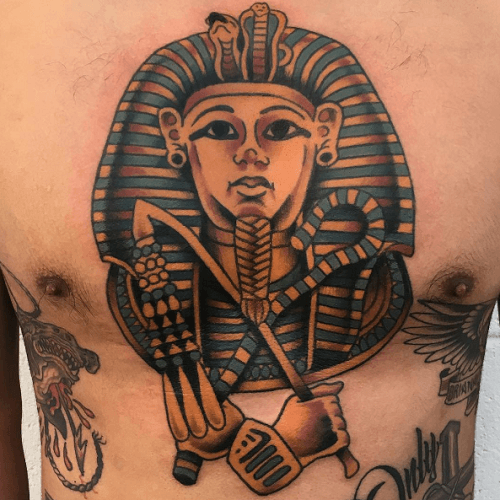
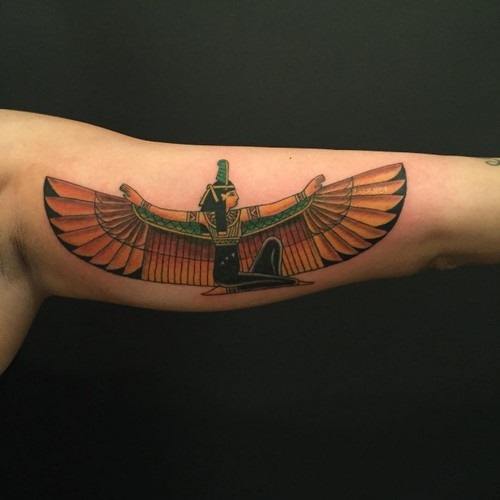
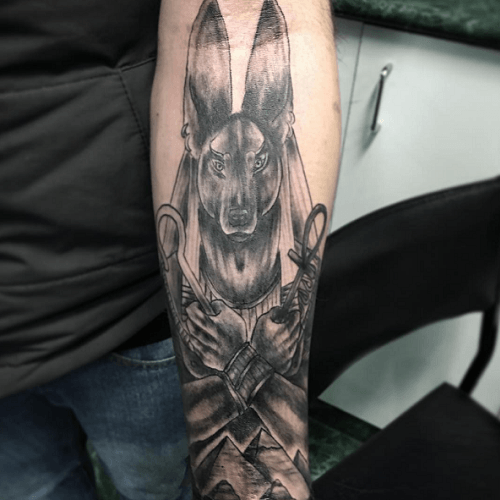
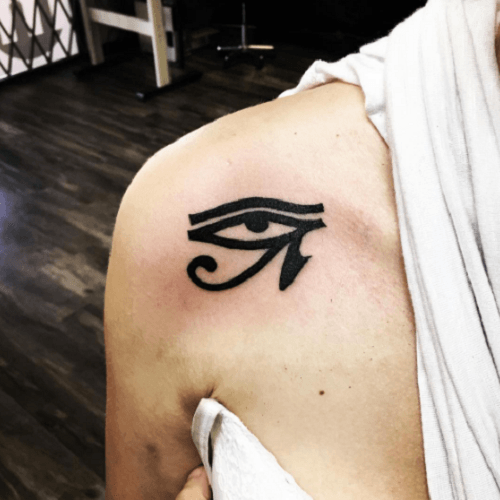
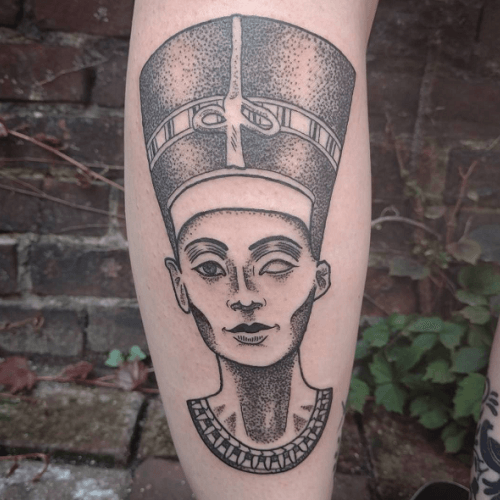
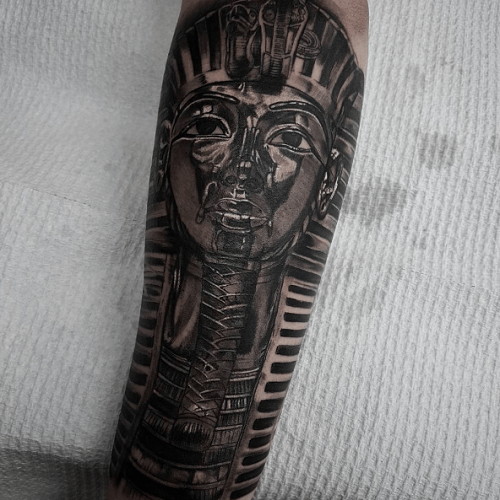
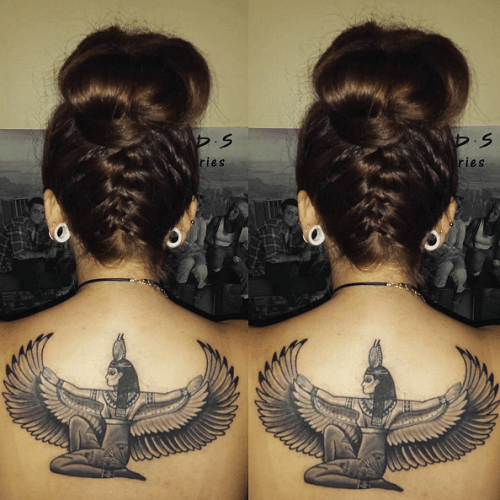
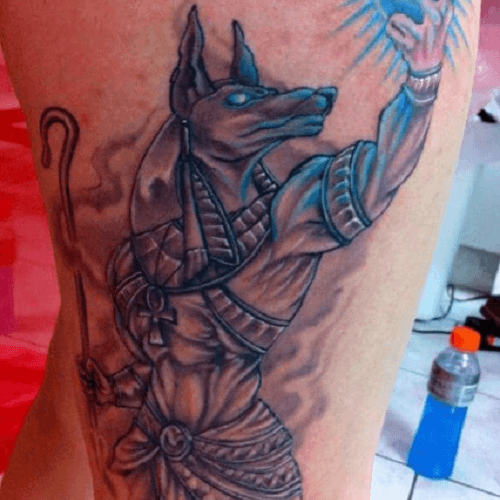
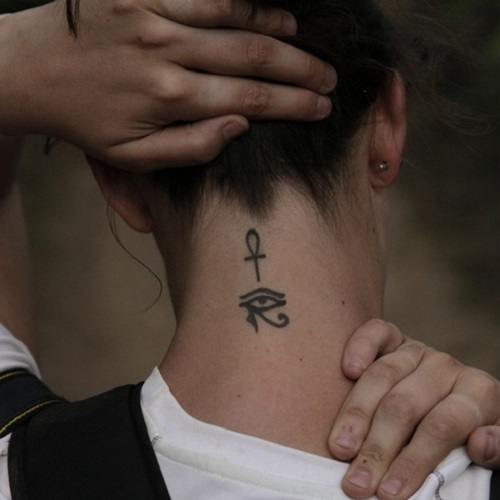
Leave a Reply